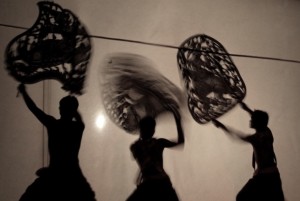 One of the most common mistakes I see new writers make is something called head hopping: the act of showing what more than a single character is thinking in a scene. Basically, what is happening is the writer is switching from the POV of one character to the other and back again.
One of the most common mistakes I see new writers make is something called head hopping: the act of showing what more than a single character is thinking in a scene. Basically, what is happening is the writer is switching from the POV of one character to the other and back again.
If knowing what is going on in one character’s head is sexy, logically, it should follow that allowing the reader to see what is going on in the other character’s head would be double sexy. That would make sense. The problem is that it has the exact opposite effect and, in fact, will leave a reader feeling unaccountably ambivalent over what should be a super arousing scene.
I was prompted to write about this after reading what should have been an immensely hot piece. The character development was fresh and tasty, the setting conspired to make the whole exchange ubersexy, the sex was just the way I like it – lateral and quirky, perverse and delicious. Moreover, the writer has a masterfully poetic approach to language and imagery. This story should, on so many levels, have had me reaching to unbutton my jeans. But it didn’t because the writer was forcing me into a place of cognitive impossibility.
What I mean by cognitive impossibility is that we cannot mind meld. Psychologically and emotionally, we cannot internalize more than a single point of view at one time. We can intellectually appreciate many perspectives. But on that very intimate level of reality processing, we are alone.
Writers found they could perform a trick. If the character and the situation are ‘reasonable’ to the reader (i.e. if it passes the suspension of disbelief test), a reader can take on the intimate point of view of a character. We spend our lives experiencing a singular point of view – our own. First person and third person limited POVs that invite the reader to step into the mind of a character see out their eyes, and process their experiences, at least partially through their mental framework as it has been established in character development.
When we want a reader to see from another point of view, we need to press some kind of cognitive reset button: either by starting new chapter or a scene break to signal that, metaphorically, the reader needs to step on the clutch, slide into neutral and then over into another gear (another POV).
Without this mechanism, something curious happens. When you show the feelings and thoughts of BOTH characters in a scene, suddenly all those delicious details, those arousal buttons that should work well and elicit a powerful and intimate response in the reader suddenly seem muted, distant and muffled.
You get left, as a reader, puzzling as to why you aren’t turned on by what, by all accounts, should have you dripping wet or hard as a baseball bat. Most readers don’t know why the story isn’t working for them, because they’re not reading critically. They WANT to be immersed, but it’s as if something is making them too buoyant, forcing them to bob along the surface instead of getting sucked down into the yummy, sexy, hot goodness of the story.
Added to this, if you are the writer of the head hopping, you literally cannot see this. To the writer, it’s damn hot, and damn immersive. That’s because ALL those POVs are actually YOUR POV. As writer, as creator of the POVs, they all originate with you and therefore you don’t experience the cognitive failure.
This is one of those very few times when I say ‘you’re going to have to trust me on this. Showing two POVs at once will not have the effect you are looking for,’ unless, of course, your aim is to force your reader to witness explicitness without allowing them to feel and immerse in it.
As a writer, you might want to play around with that effect, pushing them into a frozen zone of reading intellectually, but not merging experientially with the text. But for god’s sake, if you’re going to do it, do it on purpose. Not by accident.

This is one of the best explanations of why a writer should avoid head-hopping that I’ve ever come across. I’ll be sharing it as widely as I can.
POV can be very tricky. When you toss in heighten emotions it’s easy for an author to think head hopping will help the scene. But your right nothing numbs down the action then an odd POV shift. A lot of Erotica and romance is written in dueling male/female POV. While I like getting both sides of the story, I agree when you start having simultaneous or even quickly changing POV it really hurts the story.
This one here is a masterpiece, please allow me to repost this, and ill share this as many as i can, thanks.
Please be my guest
I often use the Omniscient p.o.v. when writing a short story. It gives the reader a sense of security because the narrator knows all. It distances the reader from the story which is sometimes useful. However, I’ve yet to write a novel from that point of view because, while a specific short piece may benefit from that distance, I think it would make a mess of an erotic novel.